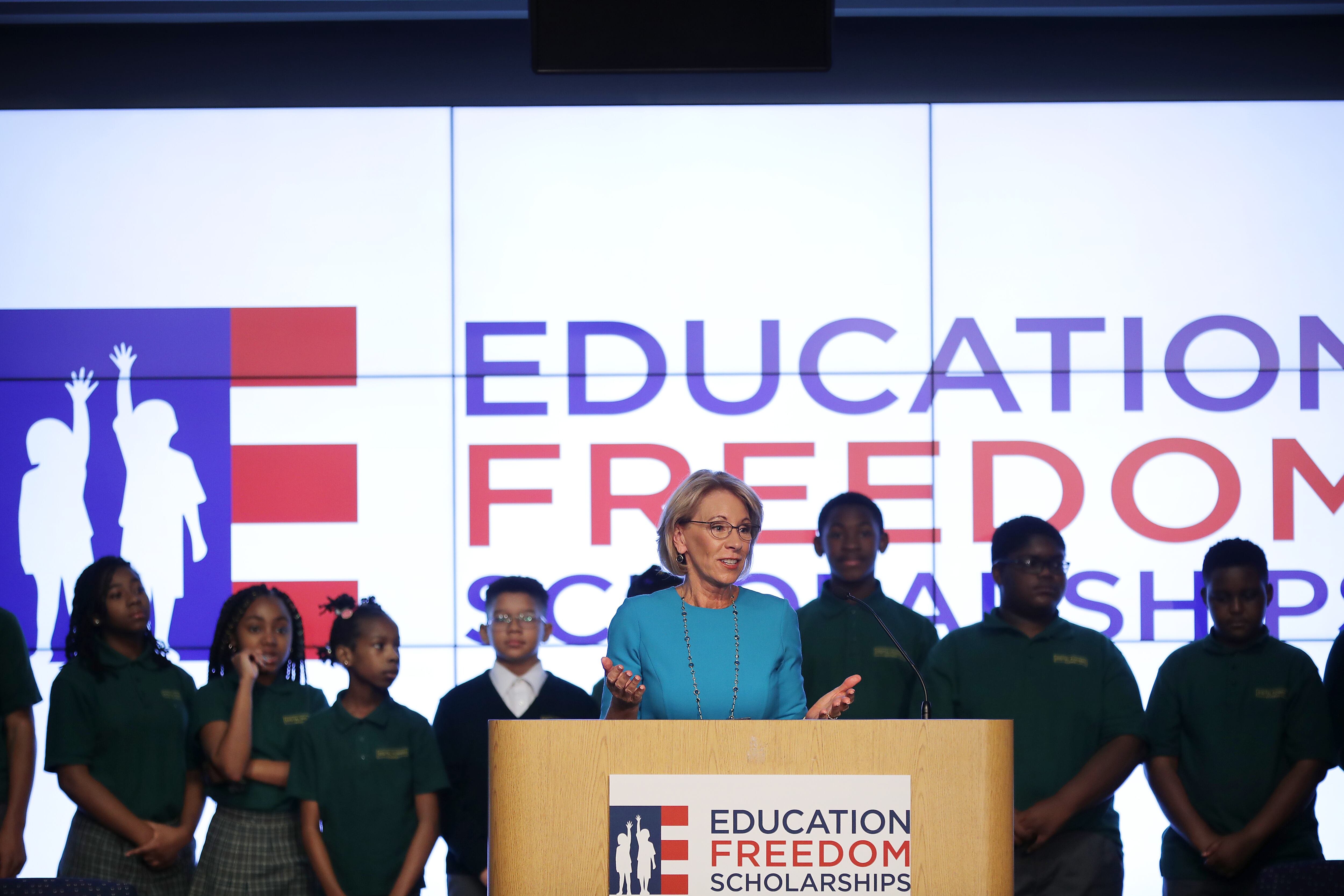The U.S. Department of Education has partially walked back its earlier guidance that effectively pushed school districts to direct more coronavirus relief to nearby private schools.
Under an interim rule announced Thursday, school districts can choose to allocate money for private schools based on their share of an area’s low-income students, rather than their share of all students. Since private schools generally serve fewer low-income students, this approach leaves more money for public school students, and is likely to be appealing to school districts.
But there’s a catch: districts that opt for this approach will be more constrained in how they use the federal dollars, and must only use them to support Title I schools, as opposed to all schools.
“If a district chooses to limit the use of this funding to serve only low-income students, they must do so equitably for students in both public and private schools,” Secretary of Education Betsy DeVos said.
The rule is legally binding, but it could be revised after public comment. Department officials said they expect the rule to be subject to litigation and potentially even revised by Congress.
The department’s original guidance, released in late April, led to fierce backlash from those who saw it as a misreading of the coronavirus relief law in an effort to help private schools. A number of legal scholars agreed, and public school groups have pushed states and districts to flout the department. Several states said they would.
Private schools, though, have said they are facing huge financial challenges and need more federal support. DeVos, a longtime champion of tuition vouchers for private schools, emphasized this point.
“More than 100 private schools, including many Catholic schools, have already announced they will never reopen and hundreds more face a similar fate,” she said Thursday. “Now is not the time to focus on what word comes before ‘school.’”
Still, the new rule — which unlike the initial guidance, has the force of law — makes a significant concession to public school advocates.
“In light of concerns expressed … we are affording flexibility to [a district] that helps poor children by spending its CARES Act funds only in its Title I schools to use the proportional share it calculated,” the rule reads.
In other words, yes, districts can set aside resources for private schools by only accounting for private schools’ low-income students. However, the rule warns, districts can only do so if they also limit relief dollars to Title I public schools, which serve many students from low-income families, as opposed to all schools in the district.
Critics are still likely to argue that the department’s regulations unnecessarily tie school districts’ hands in a way that Congress didn’t intend and isn’t spelled out in the CARES Act. Indeed, the national school superintendents association, AASA, released a statement criticizing the move.
“The policy priorities of the Secretary represent an opportunistic money grab, using the pandemic environment to advance the privatization agenda,” said executive director Daniel Domenech.
It’s not clear how many districts will take the new approach, since some coronavirus-related costs, like cleaning schools, will apply to schools of all types.
That, DeVos said, is the point she has been trying to make about private schools. “The coronavirus does not discriminate,” she said. “Everyone and everything is affected, and that’s especially true in education.”
In fact, though, the virus has hit some communities much harder than others, both from a public health and educational perspective. Surveys and news reports consistently show that technology and internet access gaps have made remote instruction particularly difficult for low-income students.
Because of this, it may be precisely Title I schools that face the highest costs, and school districts may not have much trouble complying with the department’s rule allowing them to limit aid to private schools.
Jim Blew, an assistant secretary at the department, said that the new rule shows that the department has listened to feedback and has always tried to honor the intent of the law. “We actually heard and listened and then accommodated,” he said.
Still, the new interim rule does not completely settle the matter, something department officials acknowledged, saying it still might be challenged in court or amended by Congress.
“This story doesn’t end with today’s announcement,“ said Blew.






